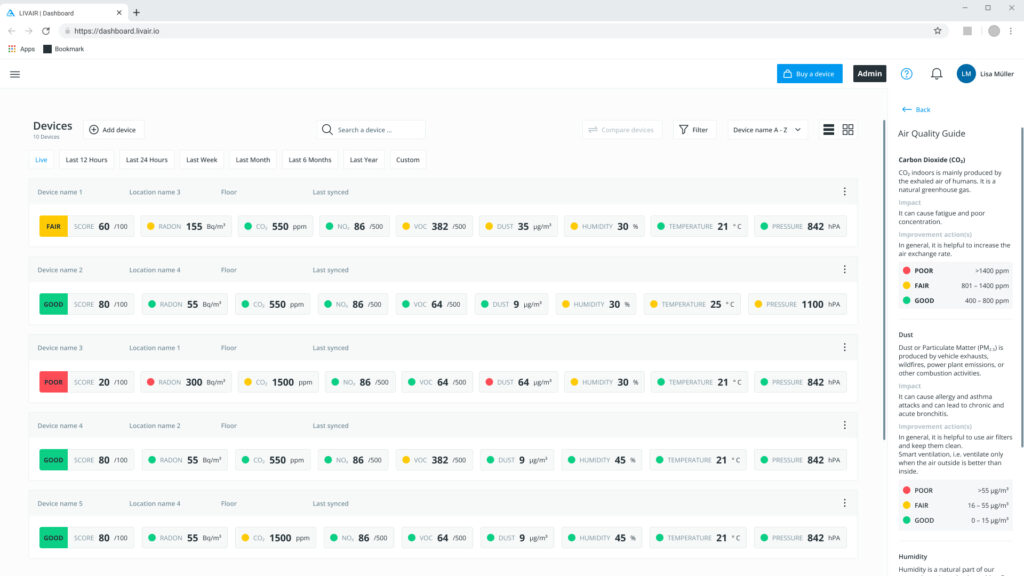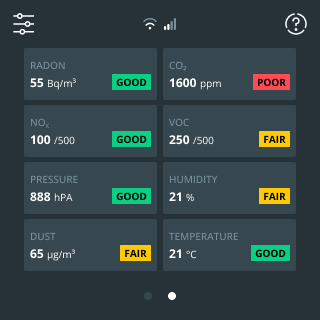- 351 - 500
- 151 - 350
- 0 - 150
Origin
Paints, solvents, carpets, furniture, cleaning agents, disinfectants, pesticides, air fresheners
Effects
may cause headaches, fatigue, allergic skin reactions, eye and throat irritation; may affect comfort, concentration and productivity
Improvement measure(s)
Increase air exchange rate; use air filters; remove or replace VOC sources


You can find all your real-time results in our dashboard with integrated air quality guide
The Air Quality Guide (AQG) is designed to help users quickly and easily classify their measured air values on a scale.
It will inform you about the origin of the relevant air factor, what effects it can have on your health and well-being and give you some general improvement measures that can work if you don't have complex problems.
LivAir One - the most intelligent air quality monitor
The LivAir monitor is equipped with a variety of sensors. The centerpiece is our patented radon sensor.






Make the invisible visible
and book your consultation now!
Take a look at how Livair ensures better indoor air.
- invest only 20 minutes of your time
- completely non-binding
- 100% Added value for you
Find out more about our other built-in sensors
Volatile organic compounds (VOCs) are organic chemicals that evaporate into the air at room temperature and have a variety of sources, including cleaning products, paints, varnishes, furniture, carpets, tobacco smoke and more. VOCs are found indoors, where they can have health effects on humans.
When are VOCs dangerous for humans?
A gas called carbon dioxide consists of one part carbon and two parts oxygen. It is one of the most important gases on earth because it is used by plants during photosynthesis to produce carbohydrates. Photosynthesis is necessary for the survival of life on Earth because humans and animals rely on plants for food.
Short-term effects
- Headache
- Nose, throat and eye infections
- Cough, painful breathing
- Pneumonia, bronchitis
- Skin irritations
Long-term effects
- Affects the central nervous system (headaches, anxiety)
- Cardiovascular diseases
- Respiratory diseases (asthma, cancer)
- Affects the liver, spleen and blood.
- Effects on fertility
How can VOCs be measured?
VOCs can be measured in various ways, e.g. with the help of air samplers that can measure the concentration of VOCs in the air. There are also test kits for home use that can give a quick overview of the VOC concentration in a room. However, it is important to note that not all VOCs can be measured and that a single measurement is not necessarily representative of the actual VOC exposure.











